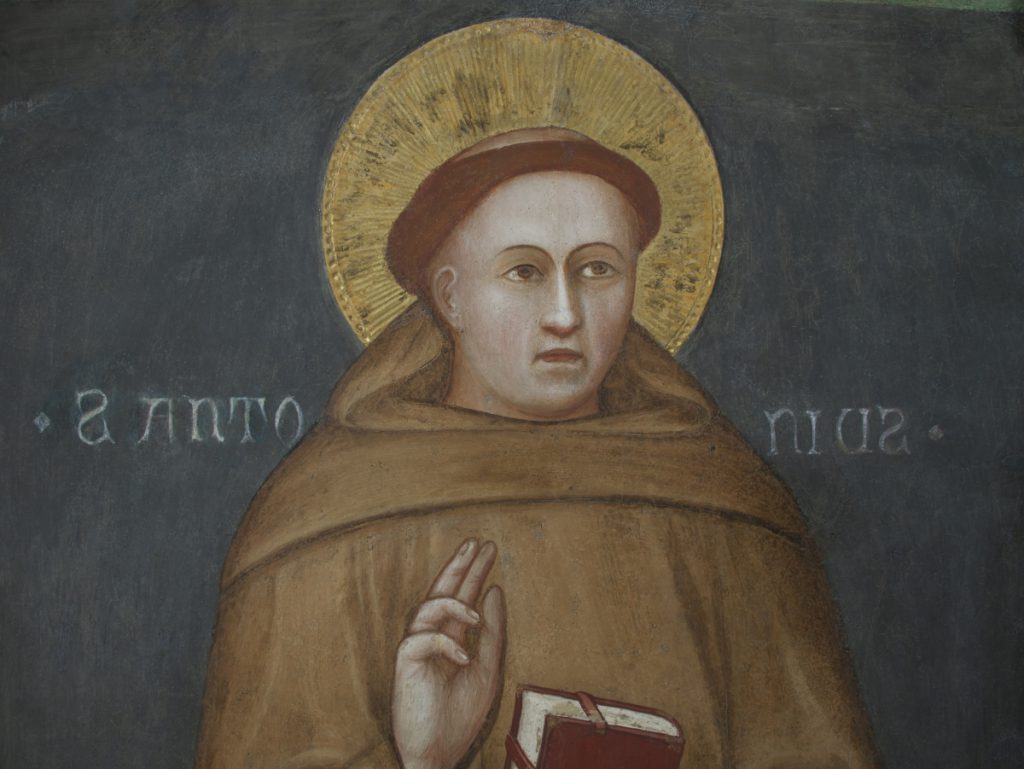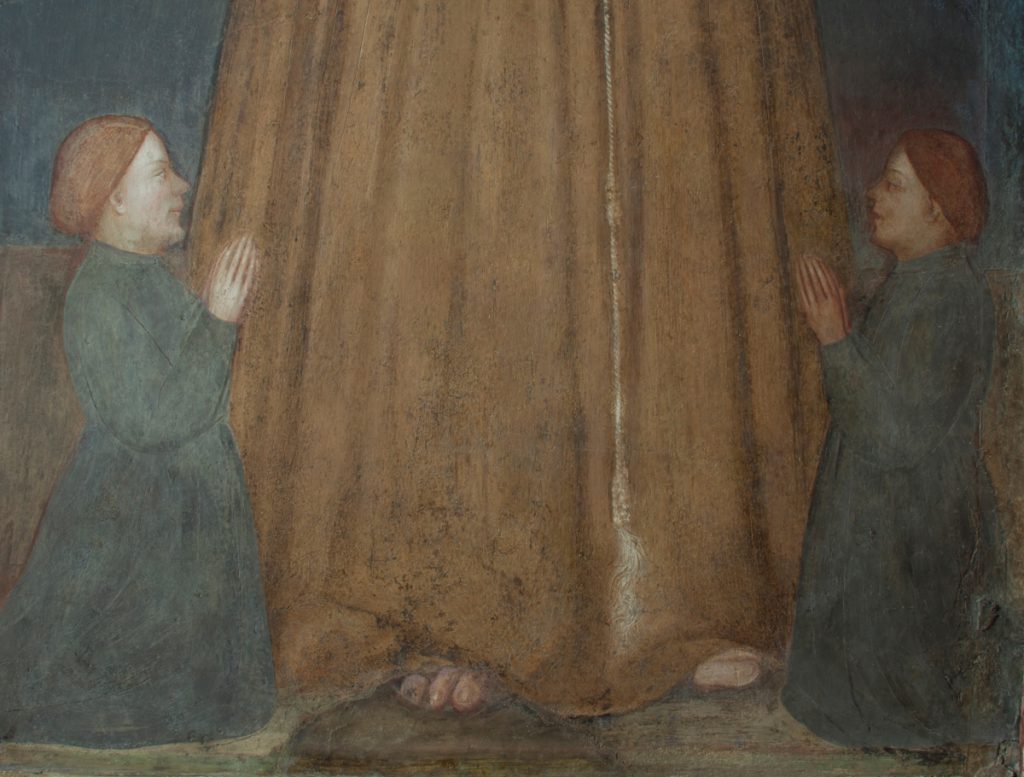Basilica of Saint Anthony, pillar to the left of the counter-façade Restoration supported by Tecno Minuterie di Crivellari and Ceron s.n.c. Restoration by Valentina Piovan, with Fiorenza Redi and Francesca Faleschini May 2018
The fresco, which is located in the presbytery, on the left front corner pillar, represents St. Anthony in full figure on a celestial background; the saint, who wears the classic brown habit, makes a blessing gesture with his right hand and holds a book with his left one. The figures of the two devoted donors appear at his knees. In the back, divided by the body of the saint, the writing “S. ANTONIUS” flows. The fresco dates back to the fourteenth century (underlying layer perhaps from the thirteenth century, with later additions of the seventeenth century [?]), and it is known as the “true effigy of St. Anthony”.
During the restoration, after the removal of the frame that contained the protective glass, two side bands, characterized by a bright blue (azurite) and green (green earth or malachite), were exposed. From small gaps in the dark layer of the background are visible fragments of a pigment based on a coarse-grained azurite, suggesting that under the currently visible image, there might be an older one, of the thirteenth century, similar but without donors and coeval to the construction of the pillar in its first execution.
The first phase of restoration of the fresco consisted in securing and consolidating the plasters: after guaranteeing the stability of the substrates, it was possible to clean the surface, especially in correspondence with the figures of the saint and the donors. The cleaning of the framing proved to be of particular interest. After removing the superficial gray, according to the direction of the works, some portions of the rear tempera frame were kept for documentary purposes (the adjacent pillar strip, which partially conceals it, could indicate as a possible ante-quem term for dating the seventeenth-century restructuring of the marble presbytery walls of the latter). Therefore, a large part of the original frescoed frame, similar to that of the fresco Christ takes leave of Mary of the nearby Chapel of the Madonna Mora was brought to light. This is a datum capable of arousing reflections on the two realizations and perhaps even placing the fresco of St. Anthony in the second half of the fourteenth century. The affinities between the two frames are to be found on a decorative and chromatic level: the only detectable difference is the reduced dimensional ratio. An important structural operation consisted in the dismantling of the lunette and the padding of detached mortar on the left of the fresco.
After a careful photographic documentation, the lunette and the lateral padding were leveled with fine sand mortar. Both the gaps in the fresco and the numerous holes of consolidation also received adequate plastering. Overall, the fresco presented a fairly good state of conservation of the pictorial material, probably in several points reintegrated in the course of ancient interventions. The pictorial integration was, therefore, limited in order to punctually connect abrasions and stuccos to the pre-existing pictorial fabric. Given the iconographic relevance of the detail that required more evidence, the inscription with the name of the Saint was slightly reinforced with lime color. From small fragments, it seems that the inscription re-proposes an older one underneath.




